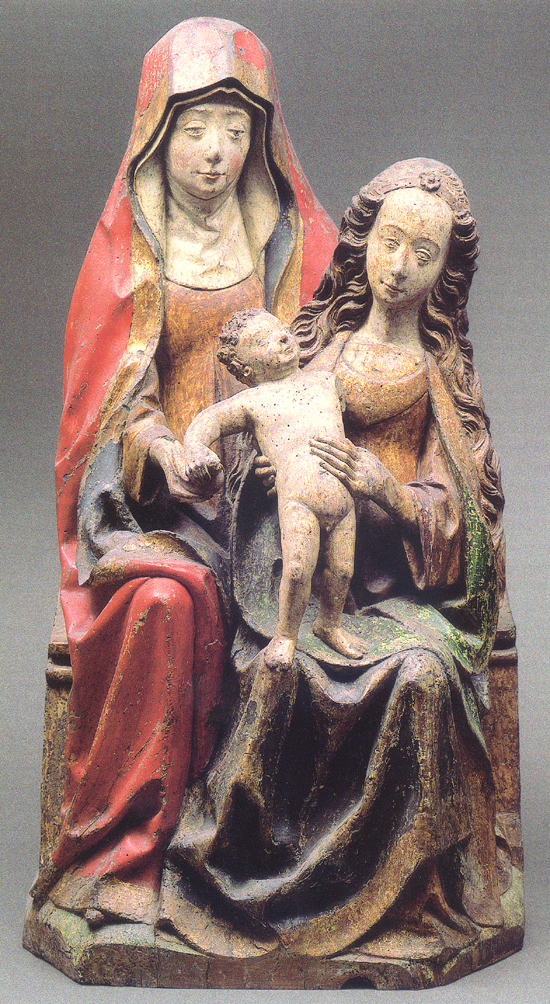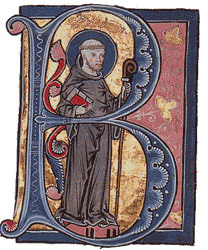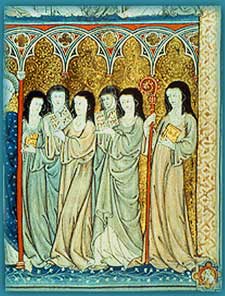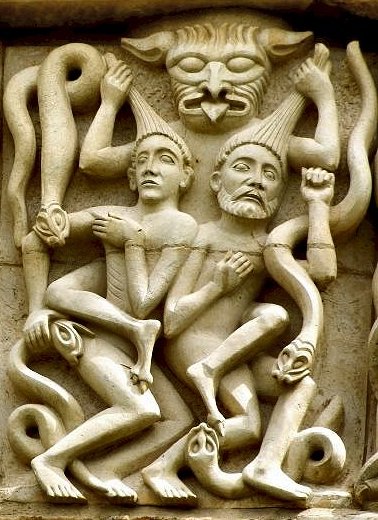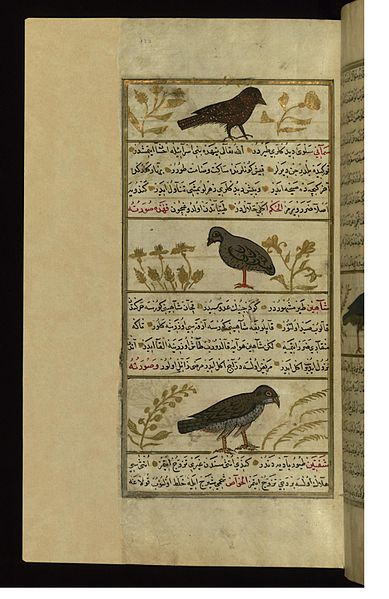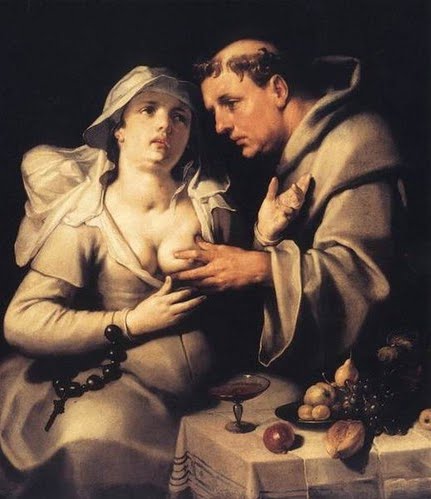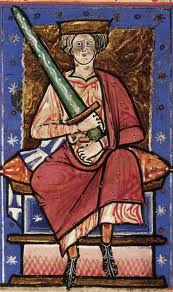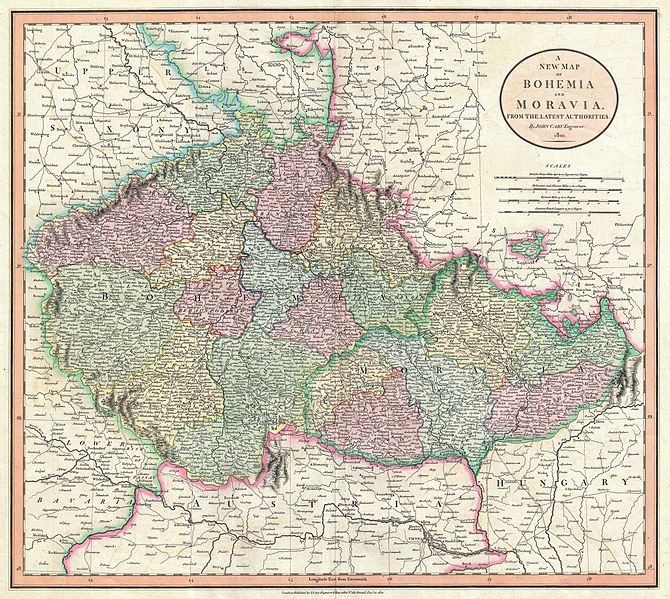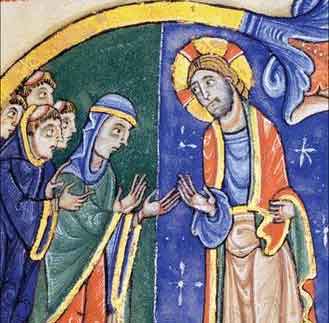The Anna Selbdritt in late medieval Germany : meaning and function of religious image
The Anna Selbdritt in late medieval Germany : meaning and function of religious image Virginia Nixon Doctor of Philosophy, Concordia University, School of…
Bodies, Saracen giants, and the medieval romance : transgression, difference, and assimilation
Bodies, Saracen Giants, and the Medieval Romance: Transgression, Difference, and Assimilation explores the treatment of the bodies of three Saracen giants in the romances of Roland and Vernagu (c. 1330), Sir Beues of Hamtoun (c. 1330), and The Taill of Rauf Coilyear (c. 1513-42)
Bernard of Clairvaux’s Writings on Violence and the Sacred
A man sworn to earthly nonviolence, poverty and obedience, he was the product of a knightly family; he envisioned himself and his monastic brethren as spiritual soldiers on the front lines of a cosmic war. Bernard explored themes of spiritual and earthly violence throughout his many compositions…
Auðun of the West-Fjords and the Saga Tradition: Similarities of Theme and Structural Suitability
Auðun of the West-Fjords and the Saga Tradition: Similarities of Theme and Structural Suitability Josie Nolan (Trinity College Dublin) Vexillum, Vol.3 (2013) Abstract…
The Search for the Past in Byzantium around the Year 800
The Search for the Past in Byzantium around the Year 800 Ihor Ševčenko Dumbarton Oaks Papers, Vol. 46, Homo Byzantinus: Papers in Honor…
Church Reunification: Pope Urban II’s Papal Policy Towards the Christian East and Its Demise
What separates this brief work from that of previous historians is that it focuses on the formation and changes of papal policy in regards to the Eastern Orthodox Church during the First Crusade, exclusively.
Fasting and the female body : from the ascetic to the pathological
Importantly, the dietary practices of the early Christians cannot be understood as a single corpus of ideas or practices. It could mean going without food altogether, as in the case of one of the desert fathers, Simeon Stylites, who ate nothing for the whole of lent.
The Final Countdown: A Historiographical Analysis on Language in the Year 1000 A.D.
We must now begin to ask ourselves what led to this increase in millenarian belief that the world would end between either 1000-1033 A.D.; 1033 being the 1000th year anniversary of the death of Christ. From the evidence provided in the first hand accounts of religious figures in the early eleventh century, it can be argued that this millenarian idea was not uncommon throughout Europe.
A Revival of Female Spirituality: Adaptations of Nuns’ Rules during the Hiberno-Frankish Monastic Movement
Before Columbanus, Irish abbots demonstrated little interest in producing monastic rules as we know them from the traditions of Benedict of Nursia and Caesarius of Arles. Preferring instruction by example to any documented tenets, Irish monasticism emphasized the conduct of the founding or ruling abbot or abbess as a model to imitate.
Double sex, double pleasure? Hermaphrodites and the medieval laws
I think the question of how the medieval laws dealt with ambivalent bodies deserves some attention in own right. The more general question is: how did medieval societies deal with experiences that challenged accepted views of what was normal?
Worse than buggery? Incest discourses in the 12th and 13th centuries
In my paper today, I will not attempt the question why it was possible that the law developed in such an extreme way as to exclude such an excessive number of people as potential marriage partners, although my opinions on some recent approaches to this problem may become transparent in the course of this talk. Instead, my interest is focussed on what I call the incest discourses in the twelfth and thirteenth century.
The Dragon and the Storm The Saracen anti-knight in Orlando furioso and Gerusalemme liberata
The Dragon and the Storm The Saracen anti-knight in Orlando furioso and Gerusalemme liberata Cam Lindley Cross University of Chicago, March 8 (2011) Abstract When…
That Melodious Linguist: Eloquence and Piety in Christian and Islamic Songbirds
That Melodious Linguist: Eloquence and Piety in Christian and Islamic Songbirds Cam Lindley Cross University of Chicago, December 8 (2010) Abstract “Birds,” writes Albertus…
The Chaste Erotics of Marie d’Oignies and Jacques de Vitry
The Chaste Erotics of Marie d’Oignies and Jacques de Vitry Jennifer Brown (Marymount Manhattan College) Journal of the History of Sexuality, Vol. 19,…
Manifestations of the Grotesque and Carnivalesque Body in Ingmar Bergman’s The Seventh Seal
Manifestations of the Grotesque and Carnivalesque Body in Ingmar Bergman’s The Seventh Seal Brian Gourley (School of English, Queen’s University Belfast)Queen’s University Belfast, Quest, Vol.1…
Hosting the king: hospitality and the royal iter in tenth-century England
Hosting the king: hospitality and the royal iter in tenth-century England Levi Roach (Trinity College, Cambridge) The Journal of Medieval History, 37.1 (March…
The Christianisation of Bohemia and Moravia
The territory of what is now Czech Republic consists of essentially two lands, Bohemia and Moravia.
Glass Bridges: Cross-Cultural Exchange between Florence and the Ottoman Empire
During the medieval period, the main aim of the crusades was recovery of the Holy Land. However, this changed in the fifteenth century for various reasons.
To Take Care of the Monks, Take Care of Christina: Christina of Markyate and the Medieval Spiritual/Material Market
In this essay I will delineate two of these emphases: (1) Christina’s powerful interaction with boundaries and the spaces they demarcate, and (2) the material/spiritual economy that develops between Christina and Geoffrey, the Abbot of the St. Albans Monastery. I will then argue that these emphases together form a message that might have been aimed at The Life’s monastic (and to some extent aristocratic) audience, perhaps even the abbots who succeeded Geoffrey.
‘Defending the Christian Faith with Our Blood’. The Battle of Lepanto (1571) and the Venetian Eastern Adriatic: Impact of a Global Conflict on the Mediterranean Periphery
The battle of Lepanto, which took place on the 7th of October 1571, was the greatest naval battle of oar driven vessels in the history of the Mediterranean1. It was then that the mighty Ottoman navy suffered its first and utter defeat in a direct confrontation with Christian forces, joined in the Holy League. Its purpose was to help Venice in the defence of Cyprus, stormed by the Ottoman troops in July of 1570, but to no avail, as on the 3rd of August 1571 the island was taken by the Ottomans.
Organized Collective Violence in Twelfth and Thirteenth Century Tuscan Countryside: Some Case Studies from Central and North Eastern Tuscany
Violence is often thought of as a characteristic of all medieval societies. How such societies chose to exercise this violence is therefore a good, and understudied, way into understanding the basic rules about how they worked. Concentrating on twelfth and thirteenth century Tuscany, my intention is to show that a specific form of violence, namely organized collective violence, was not an option available to all social groups within the medieval rural society of northern Italy…
Religious and Cultural Boundaries between Vikings and Irish: The Evidence of Conversion
If we compare sources from England, the horror with which viking attacks were viewed is immediately apparent. The heathenism of vikings is stressed as one of their dire attributes in Alcuin’s famous response to news of the attack on Lindisfarne in 793. Literary accounts of vikings also became more lengthy and imaginative over time.
‘Cast out into the hellish night’: Pagan Virtue and Pagan Poetics in Lorenzo Valla’s De voluptate
Valla wrote about Epicureanism before the Renaissance rediscovery of classical Epicurean texts. Poggio Bracciolini had not yet circulated his newly-discovered manuscript of first century Epicurean philosopher Lucretius’ De rerum natura, and Valla wrote without access to Diogenes Laertius’ Lives of the Philosophers, which discussed Epicurus’ teachings in greater detail.
Absoluimus uos uice beati petri apostolorum principis. Episcopal authority and the reconciliation of excommunicants in England and Frankia c. 900-c.1050
No mention is made of any rite being followed by Bishop Wulfstan on this occasion, but services for the reconciliation of excommunication are first recorded in the tenth and eleventh centuries.
Lay Religion and Pastoral Care in Thirteenth Century England: the Evidence of a Group of Short Confession Manuals
This poses a question: where did these engaged laypeople come from, and when? There is some evidence that suggests they should be pushed back to the thirteenth century.
